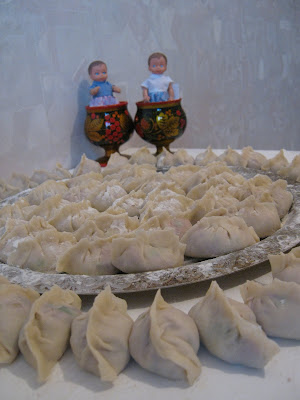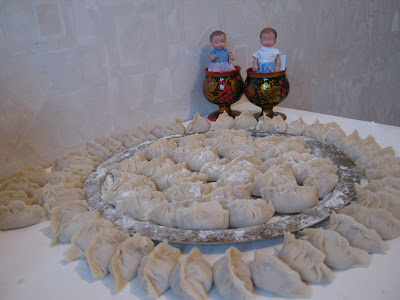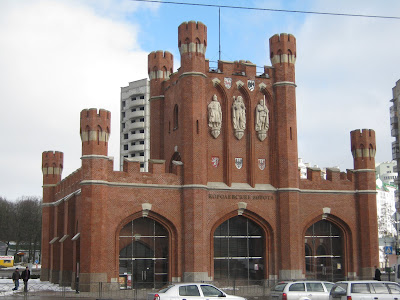
Travelling for the first time to neighbouring town in Kaliningrad Oblast. Heading to Zelenogradsk, which means Green City in Russian language.

Arriving at the bus-station which is next to the railway-station. The giantic words say Welcome!

A lonesome dog roaming the streets.

Another dog trapped inside the house.

The unforgettable Baltic Sea.



Russians respect memory. Many buildings bear the name and brief history of the someone who left an indelible mark.

A cheerful name for a shop that sells everything that children need.

A typical weekend market with flowers.

Flowers are part of every Russian's life. You see them, smell them in the air and soon this one on the bicycle will head home for the loved one.

Patriotism is etched in many ways, the trio colour of the flag on the building is one of them.

A Slavic small-town feel in this part of the town that I particularly like.

Symbol of auspicious birds from folklore.

Most complictaed version I have eve seen, but very romantic- the birds will soon come and sing on the wires.

Souvenir shops are rather dormant during early springtime.
Although small in size, the town is well-planned with clear directional signs.
Living in Kaliningrad, we have not been quite adventurous to venture into the large provincial or oblast area. However, one fine, day, my Mongolian classmate and I decided that we shall take a bus to find place of interest on the map. And the first attempt was to none other than Zelenogradsk, which means the Green City in Russian. Another well-known and more affluent seas-side town is called Sovetlogorsk which I visited last year, lined with beautiful villas and churches.
Most interesting to note, the area around the city of Kaliningrad was completely sealed off for fifty years because the Soviet Union had built huge military installations there and used the harbor as a year round port—it was one of the few Soviet ports on the Baltic which was operable in winter-time. With the fall of the Iron Curtian, the enormousness of the installations and the sheer magnitude of the environmental destruction has been exposed.
Before 1945, what is now Kaliningrad Oblast made up the northern part of East Prussia from the Baltic Sea to the east up to Lithuania and north of today's Poland. In 1992 Russian President Boris Yeltsin expressed his opinion that the oblast should be given to Poland (as was planned at the Yalta Conference in 1945 - originally the Germans were to keep Settetin while the Poles were to get Konisberg. However, when Poland asked for NATO accession in 1996, the offer was dropped. In 2004 the oblast became an enclave in another sense, being surrounded by members of the European Union and NATO.
Even not long ago, visit to some towns in Kaliningrad oblast requires passport or identification documents as they are heavily militarised but seemingly things have loosen a bit. And travelling to these towns couldn't be easier. Efficient bus and railway networks bring us to most towns on the map.
Вчера мы с Еркой в первый раз ездили в Зеленоградск. Я встала очень рано в семь часов утра. Я не спеша умылась, оделась, и позавтракала, и потом с хорошим настроением в десять часов ушла из дома.
Я подошла к автобусной остановке и недолго подождала. Вчера была суббота, поэтому на остановке было много людей. С понедельника по пятницу, я никогда не видела так много людей. Автобус скоро пришёл, я вошла в автобус и села.
Я проехала на автобусе шесть остановок до вокзала. Я вышла из автобуса и пошла к вокзалу. Ерка уже пришла туда из своего общежития и ждала меня. Мы спросили о расписании и узнали, что оно уже изменилось. В результате, нам пришлось ехать на автобусе. Мы подошли к автобусной остановке и купили билеты. Мы очень удивились, что стоимость проезда очень небольшая. Мы ждали автобуса 20 минут, и вот подошёл автобус. Мы наконец-то уехали из Калининграда в 11.20 часов.
Поездка продолжалась около одного часа. Я смотрела в окно постоянно, потому что я очень люблю смотреть русский лес и русские поля. Короче, я люблю широкое пространство, которого нет в в Сингапуре. Когда мы приехали в Зеленоградск сразу сделали несколько фотографий на остановке и на вокзале, который находится рядом. Одна добрая русская женщина подошла к нам, и сказала, что лучше бы мы обе присутствовали на фотографии и сфотографировала нас.
Мы спросили у людей дорогу до моря. Они сказали что нужно просто перейти дорогу и идти прямо и потом повернуть налево. Вот мы и увидели Балтийское море! Благодаря хорошей погоде, солнце сияло, море было голубым и мирным. Был такой прекрасный момент! Мы долго шли по берегу, то разговаривали, то молчали. Сначала я шла очень быстро, как всегда, но вдруг вспомнила, что сегодня у меня ни работы, ни урока, и я пошла медленно.
Нам понравилось слушать шум волн, и мы ещё сделали много фотографий на ярком солнце. Когда мы шли по берегу, то видели много пожилых людей, особенно часто встречались одинокие пожилые женщины. Мы здоровались с ними и поздравляли друг на друга с праздником Восьмого марта.
Скоро мы проголодались и сели на скамье, чтобы поесть бутерброды и выпить чай. Потом мы ушли от моря и пошли искать рынок, потому что там много магазинов. Мы ходили по магазинам и купили некоторые сувениры. В три часа мы захотели вернуться домой и пошли на остановку. Но перед поездкой, мне нужно было сходить в туалет. Искали мы долго и никак не могли найти. Мы вошли в одном магазин и спросили. Наконец, мы нашли где-то за рынком один маленький платный туалет.
Потом мы снова подошли к остановке и увидели там одну маршрутку. Мы сразу сели в неё, и скоро она уехала из Зеленоградска! Мы приехали в Калининград ровно на час позже. Хотя мы были там только полдня, но нам было очень весело!






















 Most complictaed version I have eve seen, but very romantic- the birds will soon come and sing on the wires.
Most complictaed version I have eve seen, but very romantic- the birds will soon come and sing on the wires.




























